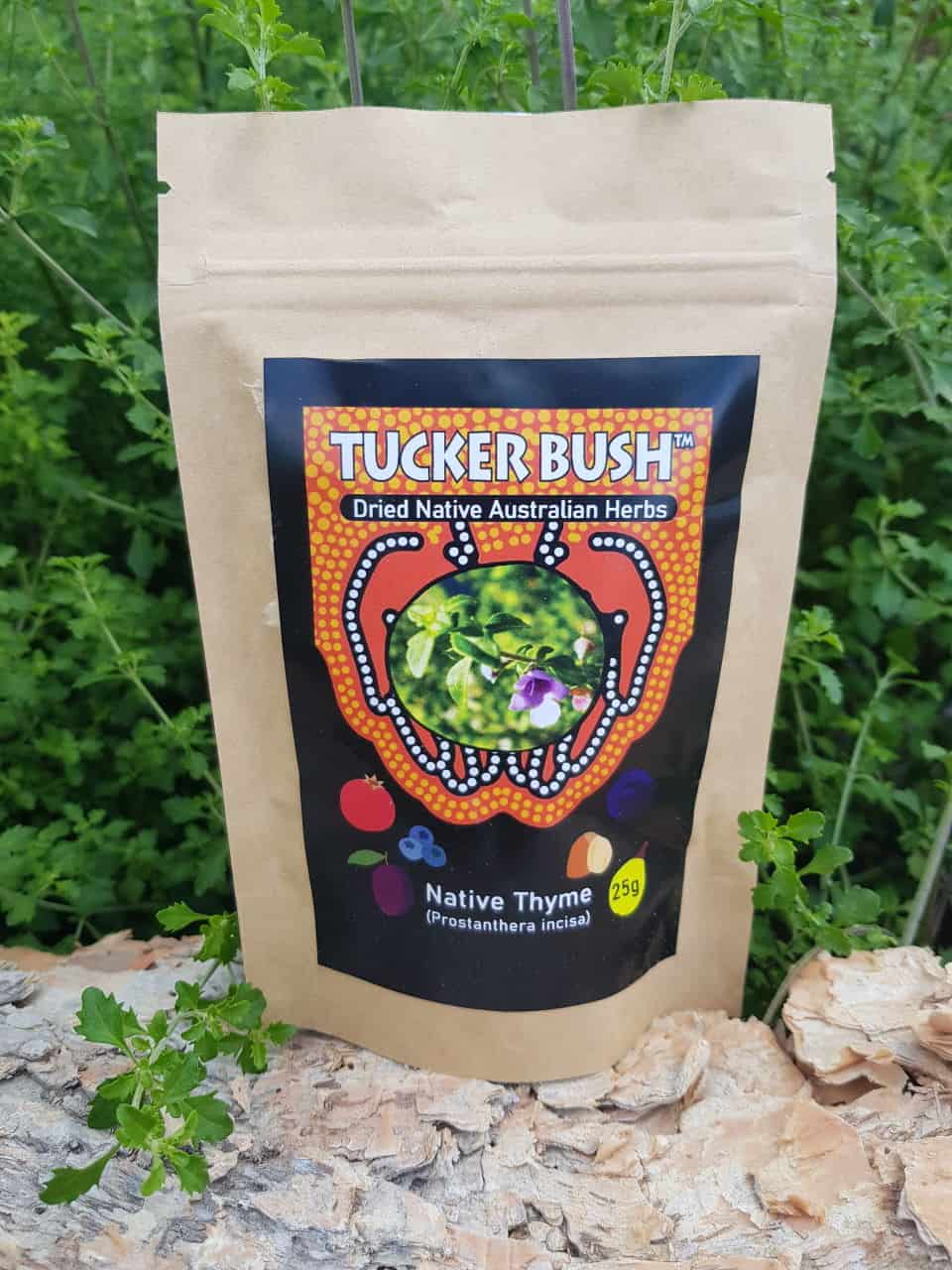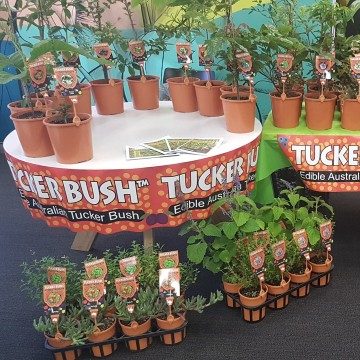What do you see when you walk past a native tree? Even though Australians grow up with easy access to the natural world, many people might only see “just a tree” — that is, if they see anything at all.
The native shrubs in your local park may be just decades old, but they come from a long line of remarkable specimens unique to the land we all live on. So in honour of NAIDOC Week, we wanted to offer a glimpse into the secret lives of five of our favourite native plants.
Lilly Pilly
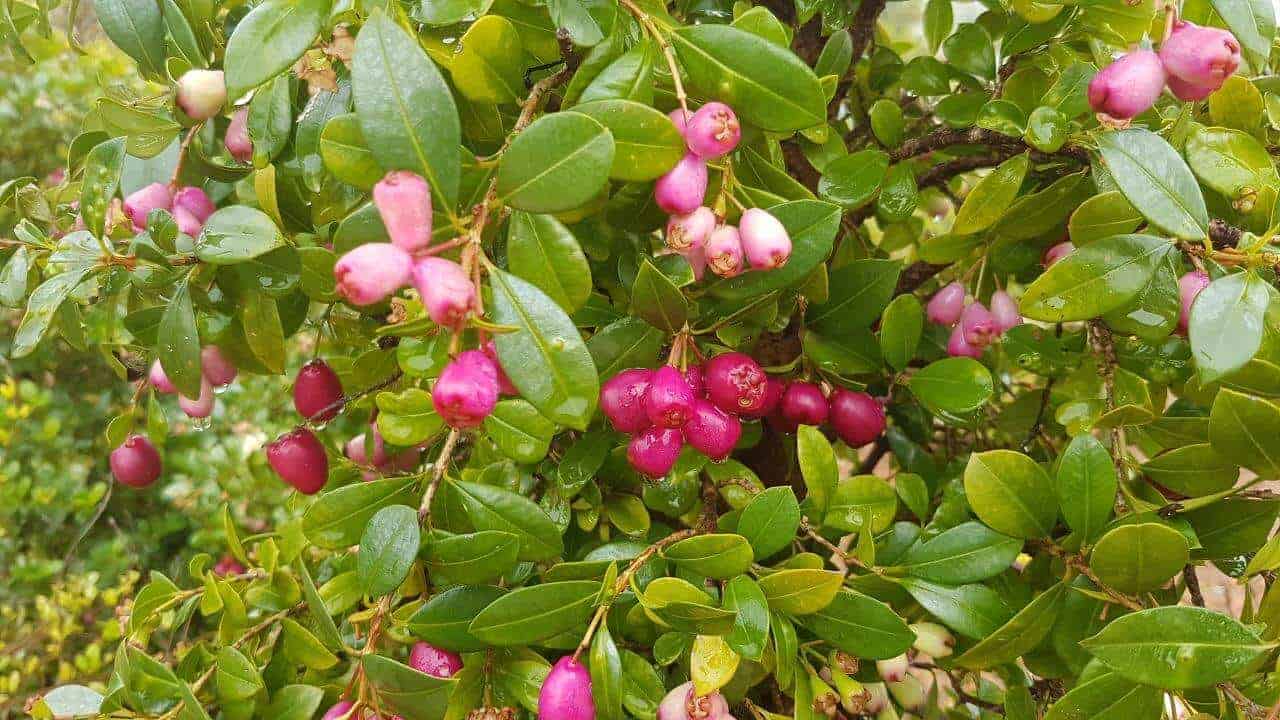
Tucker Bush Cherry – Syzygium australe
Found in gardens across the country, the Lilly Pilly (Syzygium spp.) is one of Australia’s most popular native plants. If you’ve walked around an average suburb between March and June, it’s likely you’ve passed a Lilly Pilly hedge or tree that’s absolutely bursting with fruit.
In Australia alone, there are over 60 different types of Lilly Pilly, going by a variety of names like Chinese apple, monkey apple, and satinash, and producing fruit in a variety of red and pink hues — even some purple.
This fruit features widely in traditional Aboriginal medicine, used as a treatment for sore ears, wounds and skin conditions, and generally consumed as an immune system booster.
Since learning about Lilly Pilly’s high levels of vitamin C, vitamin E, magnesium and potassium, and its potential applications in health, medicine and cosmetics, Western science now understands these ancient “medicine berries” to be a native superfood.
Rosella
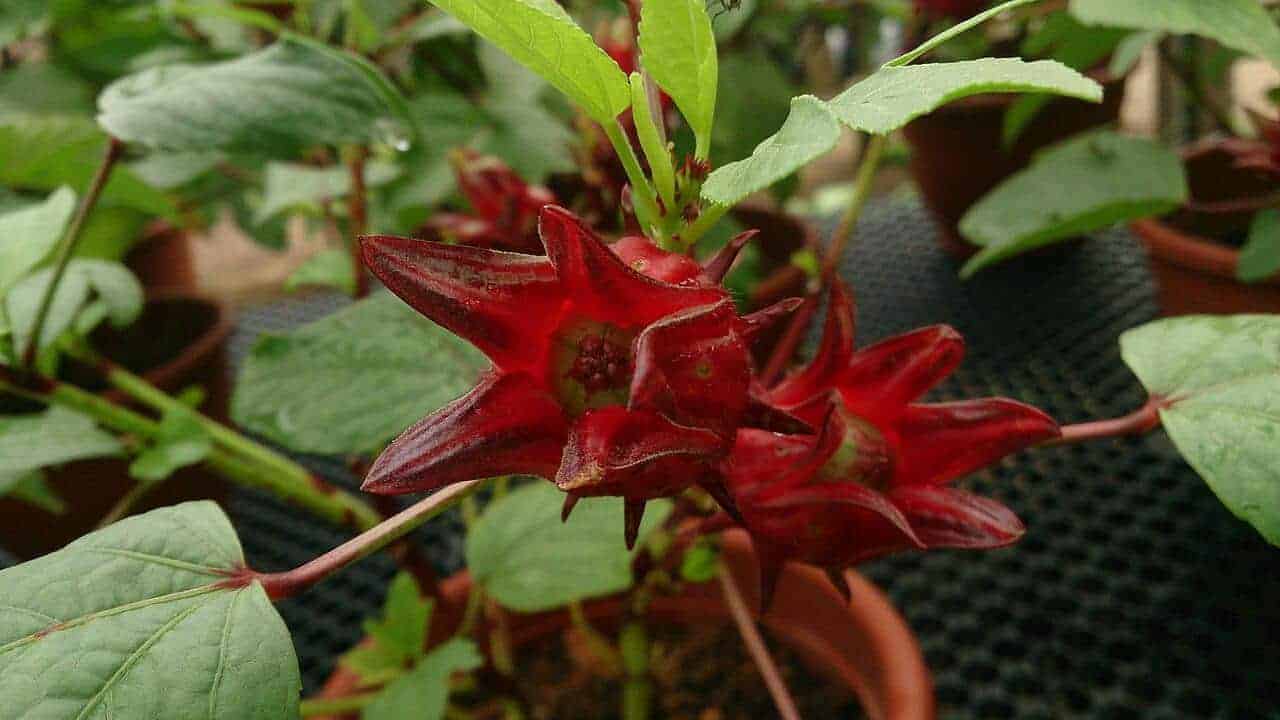
Rosella – Hibiscus sabdariffa
Most people know Rosella (Hibiscus sabdariffa) from the “flowers in syrup” served with champagne. Jars of these preserved flowers can be found in most supermarkets, which may also carry other Rosella products like tea, extracts and dried flower flakes.
Also known as “wild hibiscus”, this hardy edible is thought to have originated in south Asia, and may have been introduced to Australia by Indonesian fishermen. Following generations of adaptation and naturalisation, this Australian variety developed unique traits that differ from the H. sabdariffa varieties elsewhere in the world.
The flowers (calyxes) are high in vitamin C, and can be eaten as well as used to make pectin (the natural starch that sets jams and jellies). The plant’s tender young leaves and stems are edible too, and can be used fresh in salads or enjoyed in stir-fries or curries.
Roasted seeds may be ground into flour, used as a coffee substitute, or as a source of seed oil. Finally, the bitter root is also edible, with some cultures around the world finding uses for it in both cuisine and traditional medicine.
Wattleseed
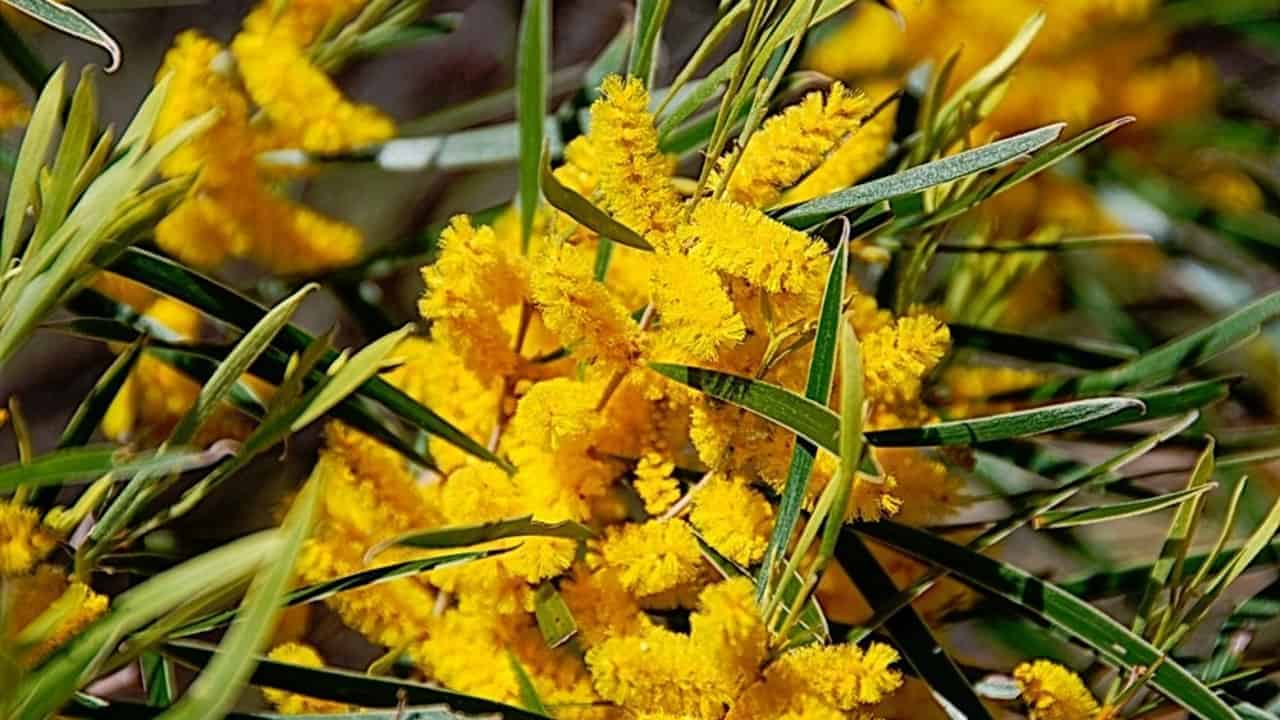
Raspberry Jam Wattle – Acacia acuminata
Out of over 950 species of Australian wattles, most of them seem to bear edible parts. However, for obvious reasons, we recommend only considering species (and parts) that have a proven track record of safe eating.
Raspberry Jam Wattle (Acacia acuminata) is one such species. It’s a WA native named after its strong aroma that resembles raspberry jam. It’s also known as Manjart, Munertor, Mungaitch or Mungat in the Noongar language, and “jam tree” or “fine leaf jam” in English.
The edible wattleseed is used in Noongar cuisine to make flour and coal-baked into small cakes. Other uses for this nutty, gluten-free ingredient include bread, biscuits, coffee, chocolate, tea and icecream. The sweet tree gum (known as “menna” and nicknamed “bush toffee”) is also edible, and was turned into cakes and made into tea.
Beyond food, the fragrant hardwood of the Raspberry Jam wattle was also used for tools, utensils, artifacts and weaponry.
Lemon Myrtle

Lemon Myrtle – Backhousia citriodora
Lemon Myrtle (Backhousia citriodora) is a native species that’s grown in popularity in recent years. Dubbed Australia’s “Queen of Lemon Herbs”, it boasts an intensely citrus fragrance, thanks to it being the most concentrated source of plant citral (over 90%) in the world. (Citral is an essential oil with antimicrobial and antifungal properties, superior to that of both eucalyptus oil and tea tree oil.)
But most people today don’t realise that Aboriginal and Torres Strait Islander peoples in the northern tropical regions of the country have been using this incredible superfood as a culinary flavouring and healing oil for thousands of years (we’ve seen sources ranging from “centuries” to “40,000 years”). In Aboriginal cuisine, Lemon Myrtle leaves were added to fish wrapped in paperbark to add a delectable citrus flavour and aroma to the meat. In bush medicine, leaves and oils were used to treat headaches, colds, infections, and a variety of other ailments.
In more recent history, Victorian soft drink manufacturer Tarax used Lemon Myrtle oil as a flavouring substitute when lemons were in short supply during World War II. Commercial cultivation fell into decline in the following decades, but gained traction in the 90s as industries cottoned on to the market potential this native herb has to offer.
Today, we can find Lemon Myrtle products just about everywhere, from local markets to national retail stores.
Youlk
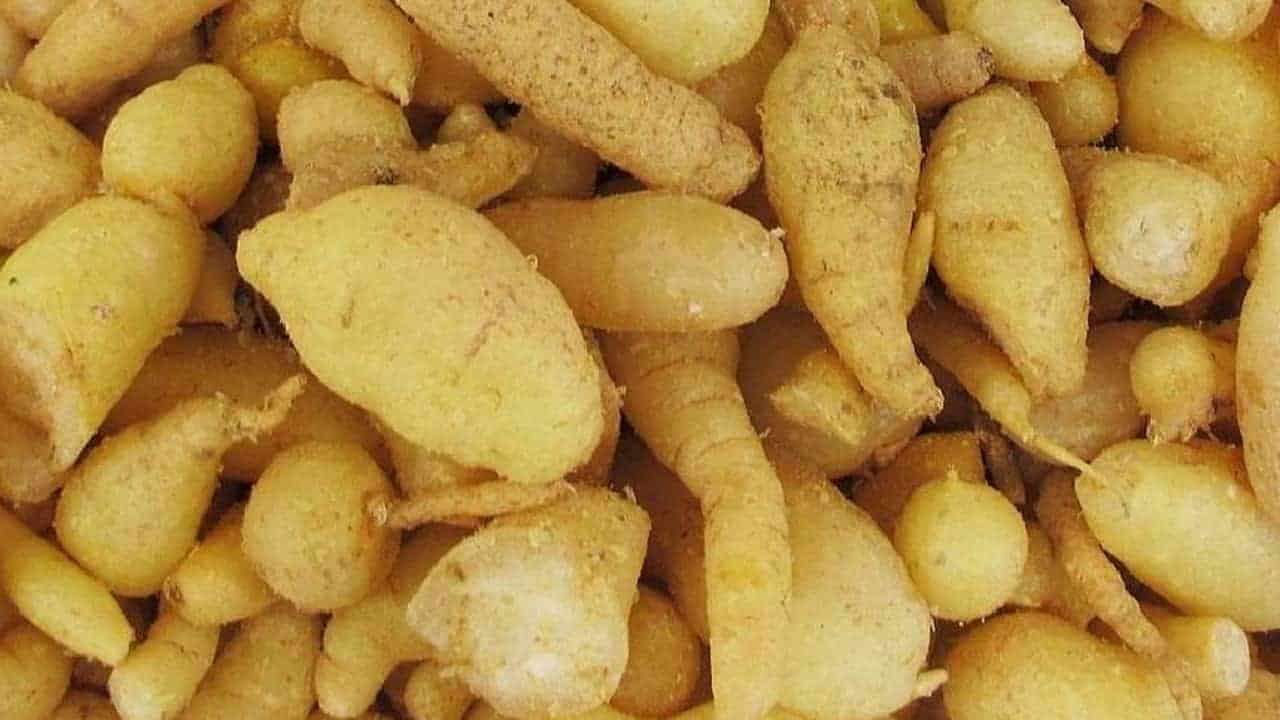
Youlk – Platysace deflexa
Also known as “Ravensthorpe Radish”, Youlk (Platysace deflexa) is a Western Australian native that’s significant in Noongar culture. Apart from being a delicious bushfood vegetable, it’s also considered a marker of Indigenous identity, spirituality and connection to Country.
Traditionally, this bushfood root was cultivated in areas commonly referred to as the South Coast and south-eastern Wheatbelt region of Western Australia. Women would harvest them with digging sticks, then roast them before eating.
These days, farmers are exploring methods for large-scale cultivation, aiming to restore this native ingredient to its rightful place as a staple vegetable. Youlk isn’t widely known just yet in 2020, but said to be a rising star in the food and supermarket scene.
Until it hits the mass market, the best way to try this special bushroot may be to grow your own.
So much more to tell…
There are so many thousands more plants in this country, and so many more stories to tell you. But they aren’t all our stories.
As a non-Indigenous business, we can only scratch the surface of this country’s true history, and we acknowledge the Aboriginal and Torres Strait Island people, their Elders past, present and emerging, and the wisdom and knowledge they have shared with us.
If you’d like to learn more, NAIDOC presents the perfect opportunity to learn more about bushfoods and Aboriginal culture. Here’s where we recommend starting:
Attend a NAIDOC Week event
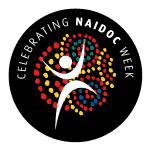
The official NAIDOC Week events directory lists a variety of virtual and in-person events around the country. Bear in mind there may be more, unlisted events running in your area, so be sure to check community notice boards and your local papers and Facebook groups for more.
Enjoy a cultural experience
Book yourself a cultural tour led by true locals with life experience. Be sure to book through Indigenous-owned tour operators who have the blessing of their local Elders — this guarantees you get the real deal while helping a local Indigenous business bounce back after COVID-19. Check out your state’s Indigenous tourism board website for tour operators close to home (WA, we got you covered!).
Buy from an Aboriginal business
There are heaps of Aboriginal owned businesses across Australia, many of which you’ll find easily accessible through social media. We’d suggest following Trading Blak on Instagram or Facebook, as they often highlight bona fide brands, artists, and small businesses, as well as important issues and current events.



